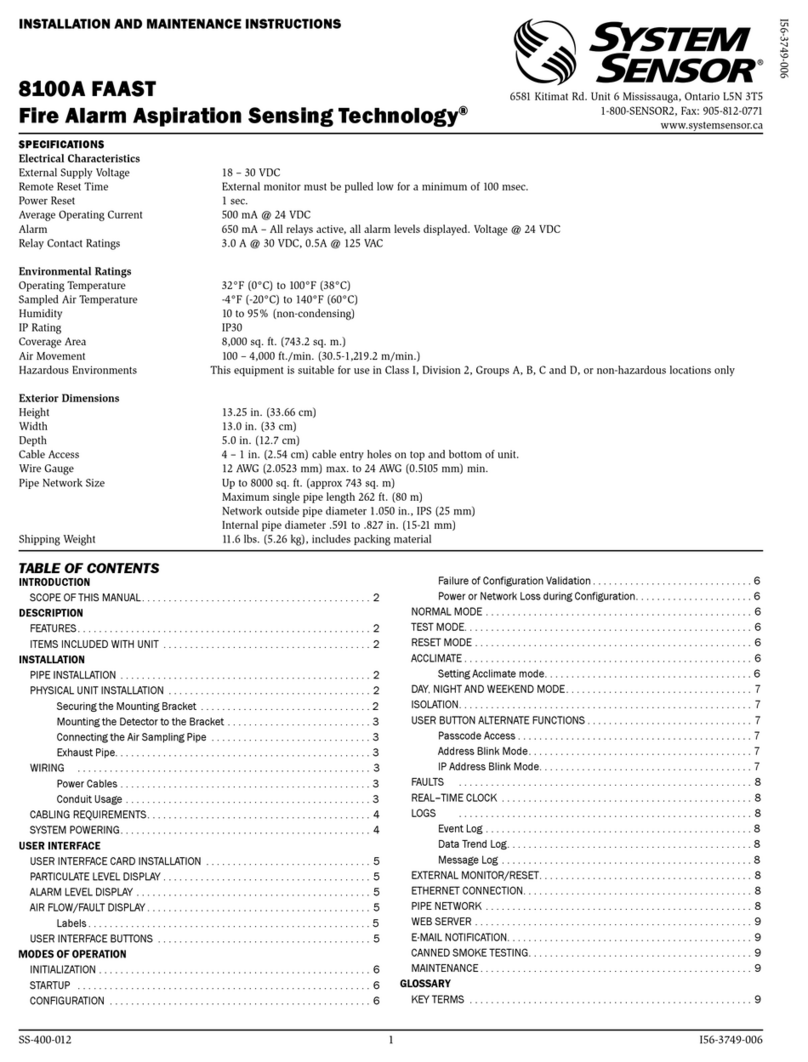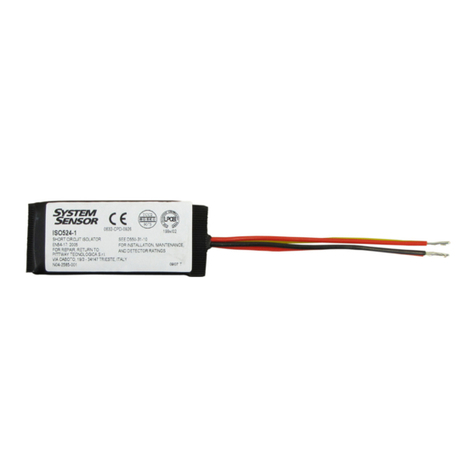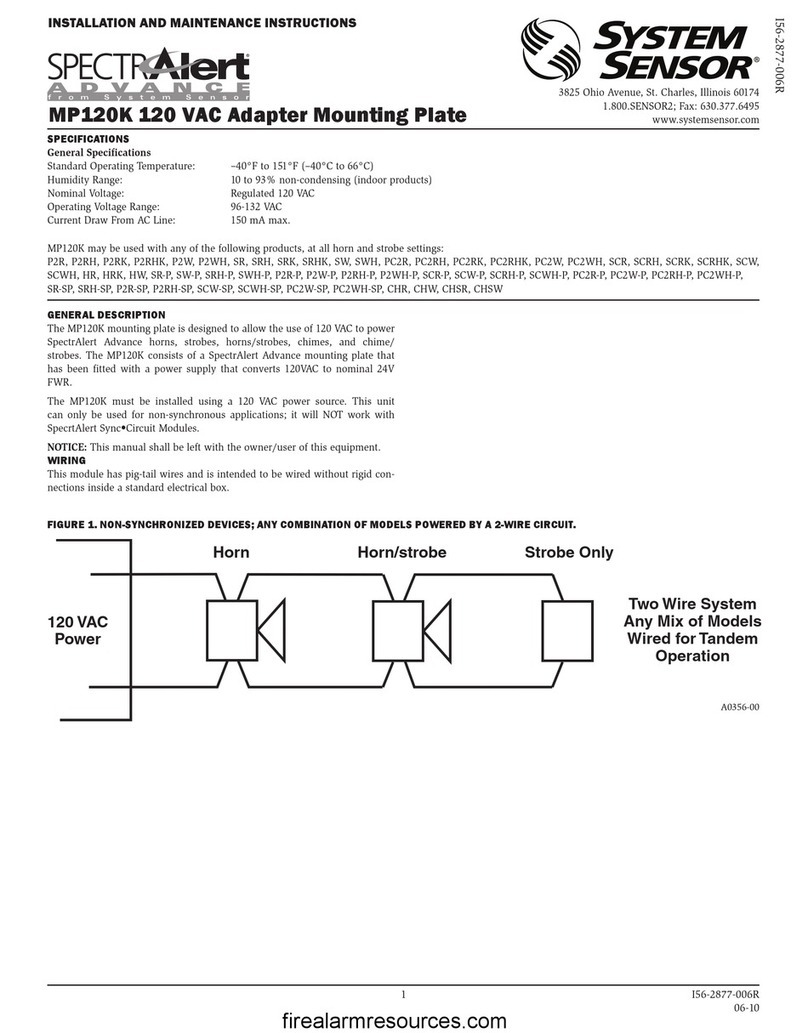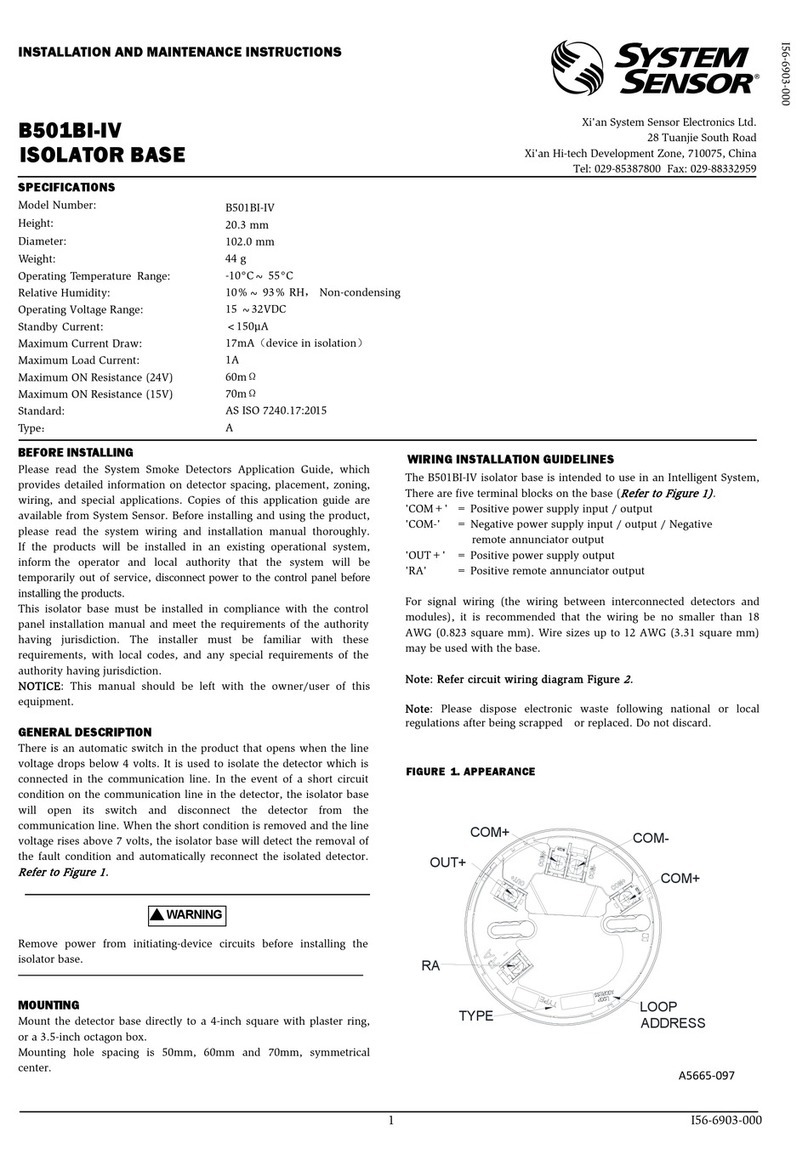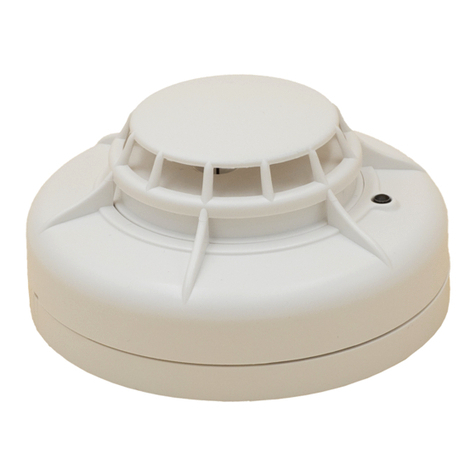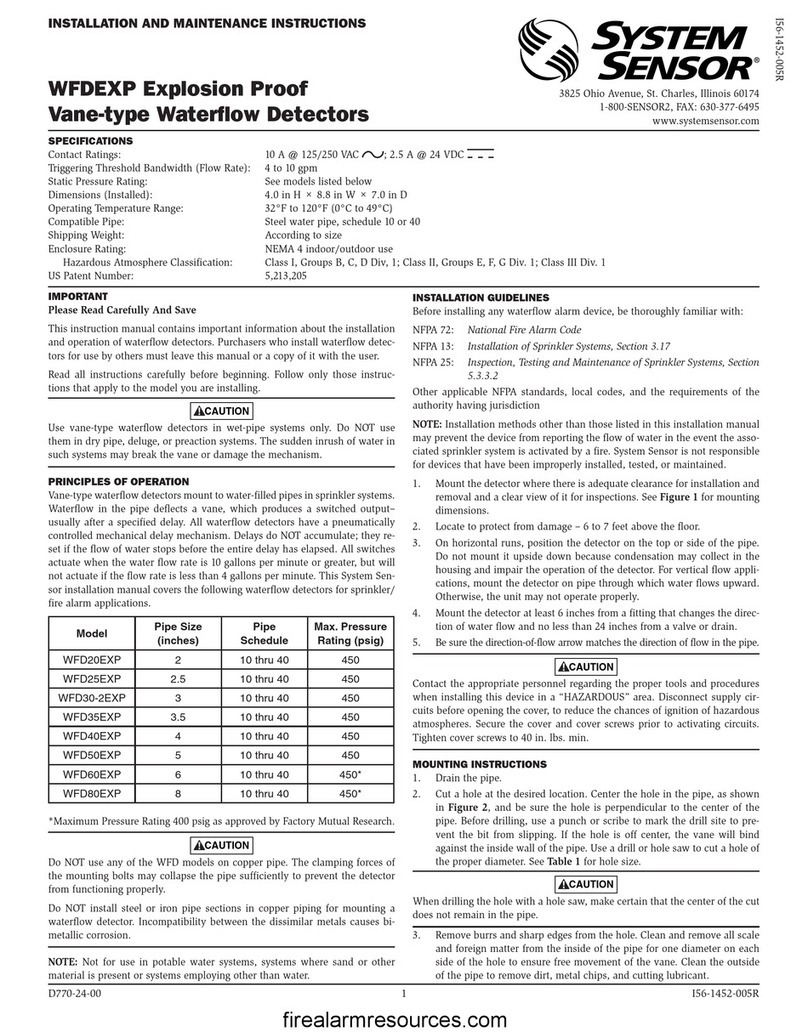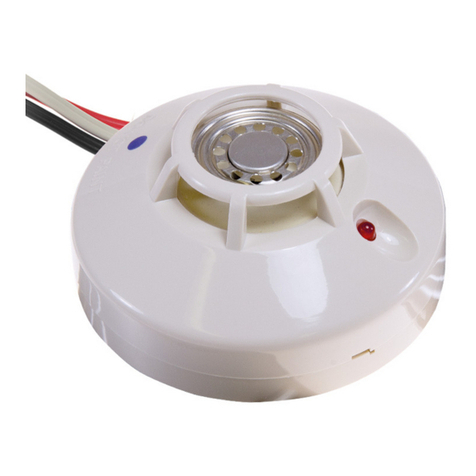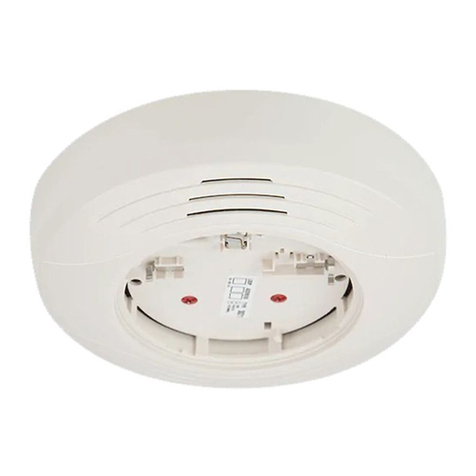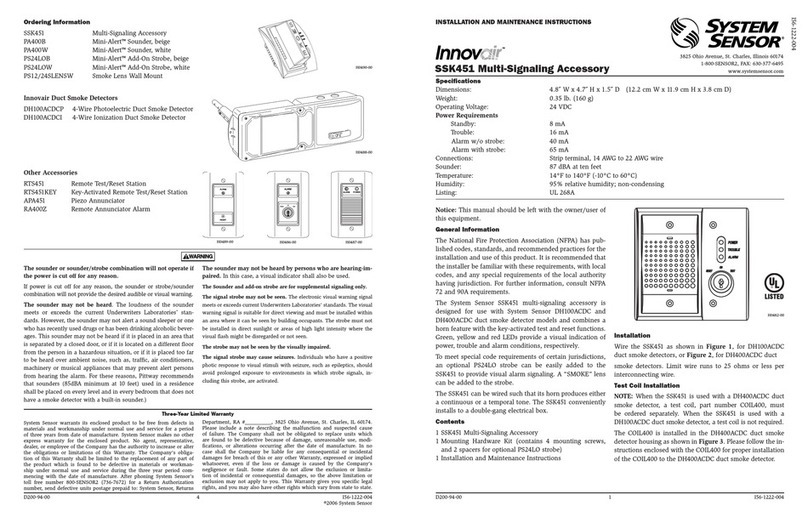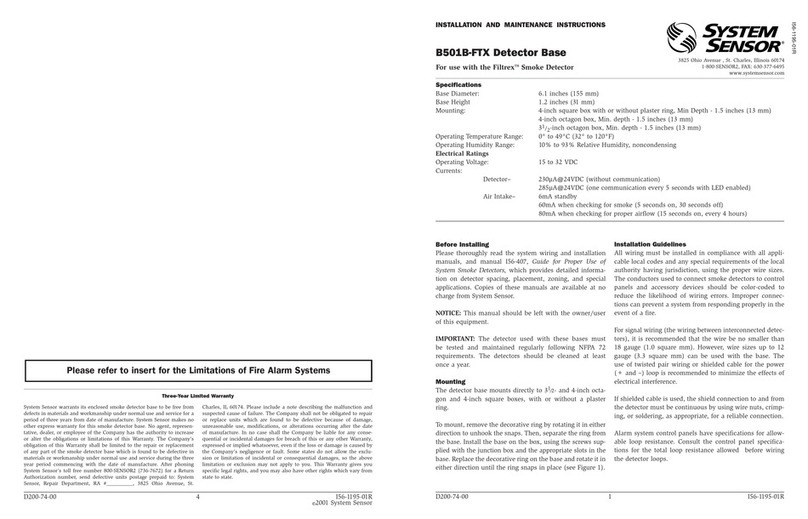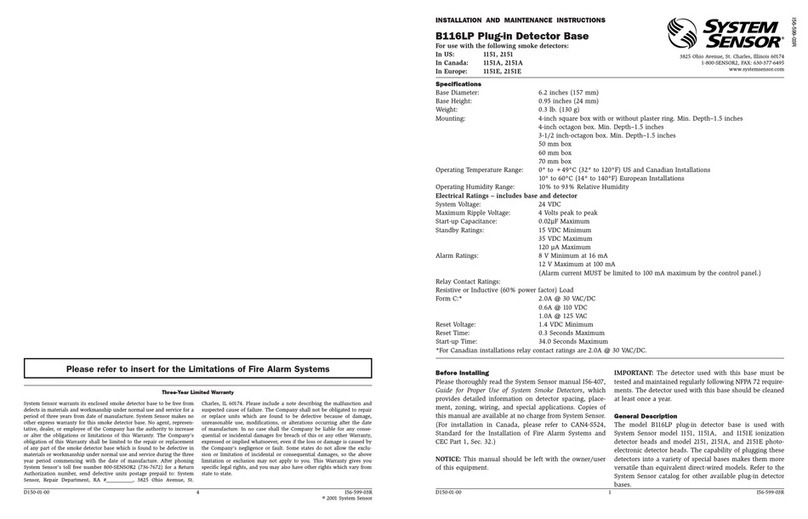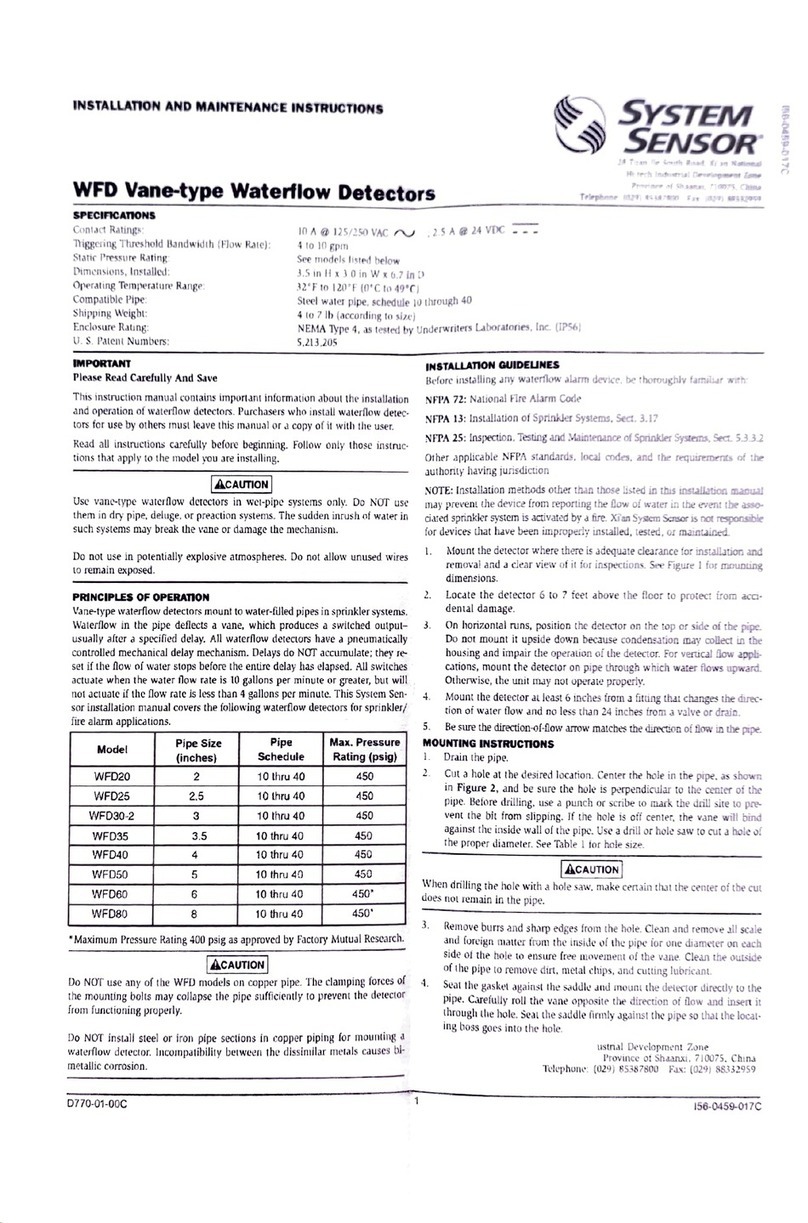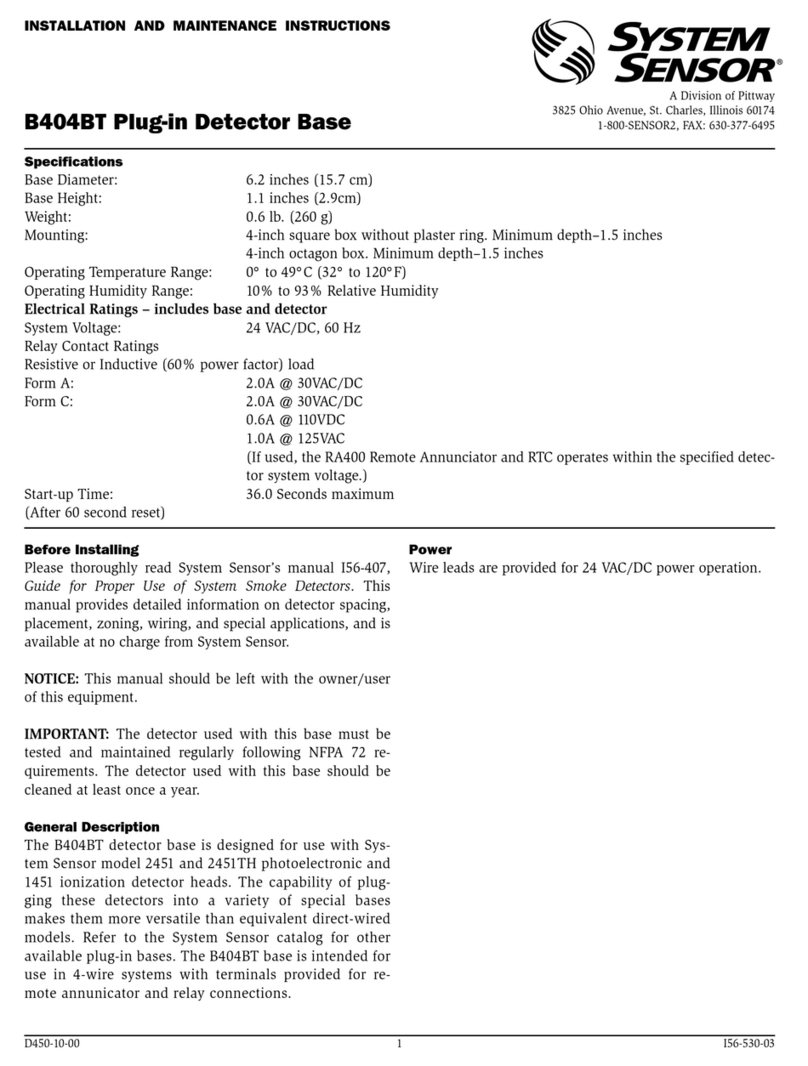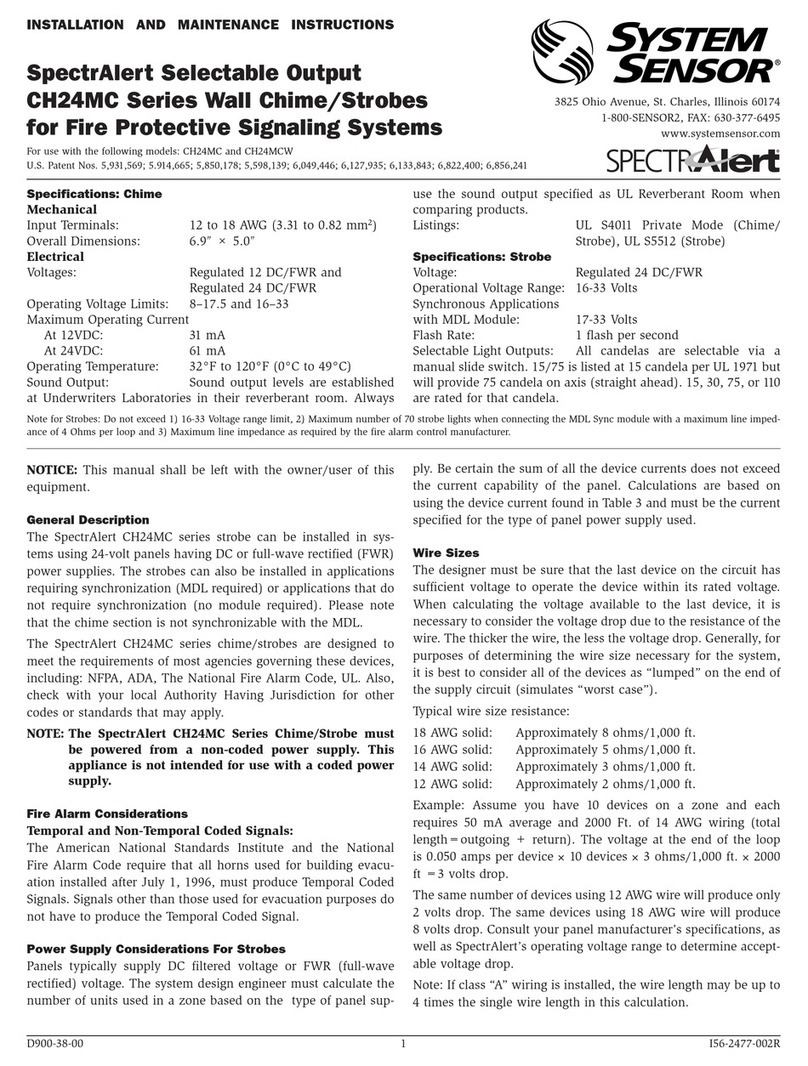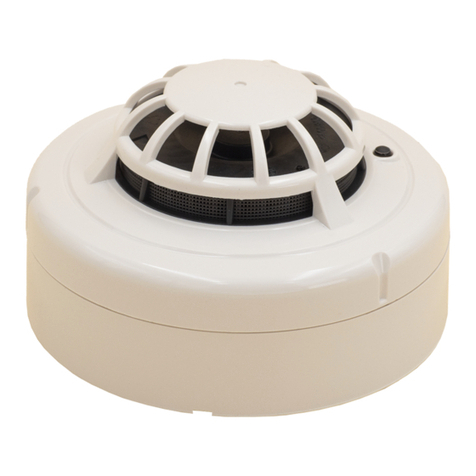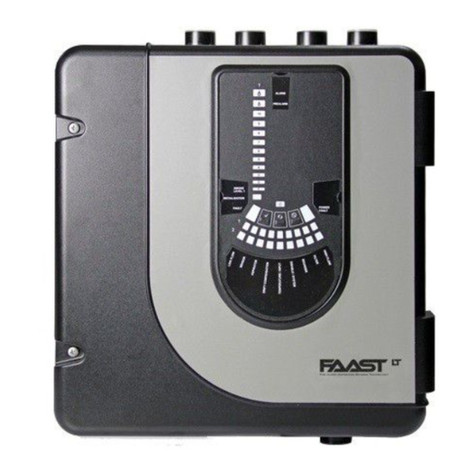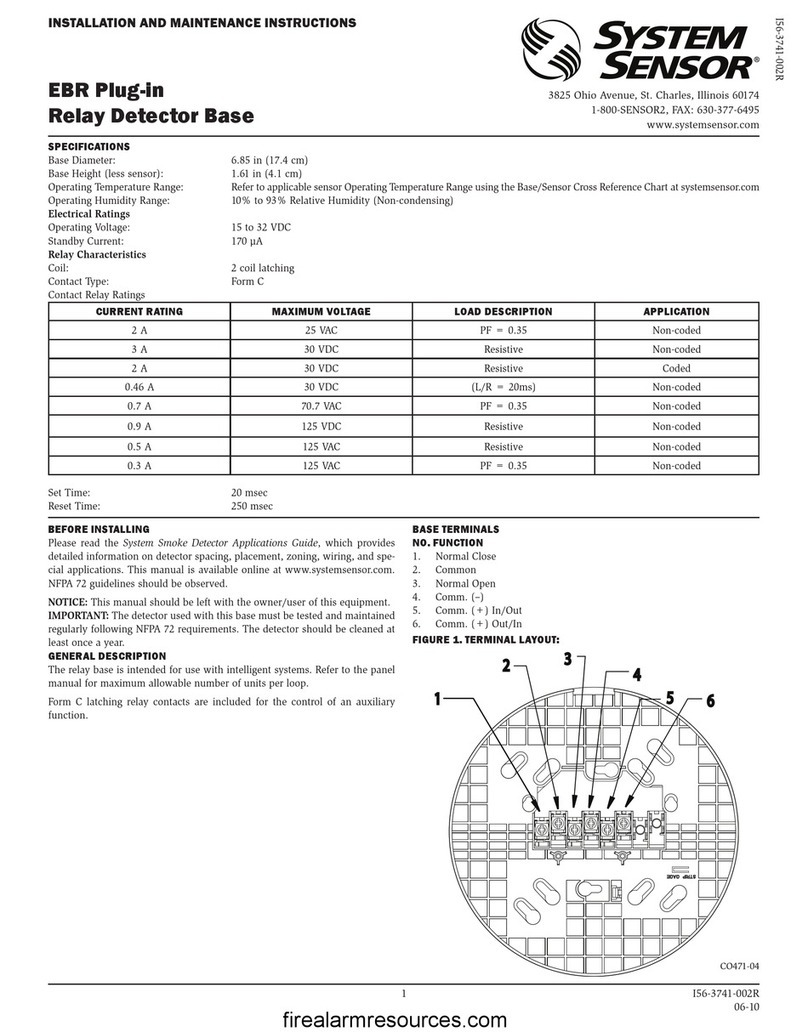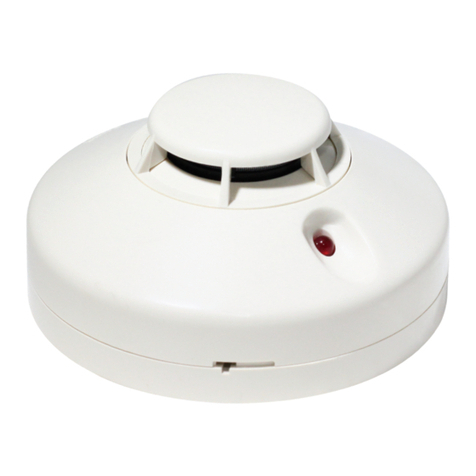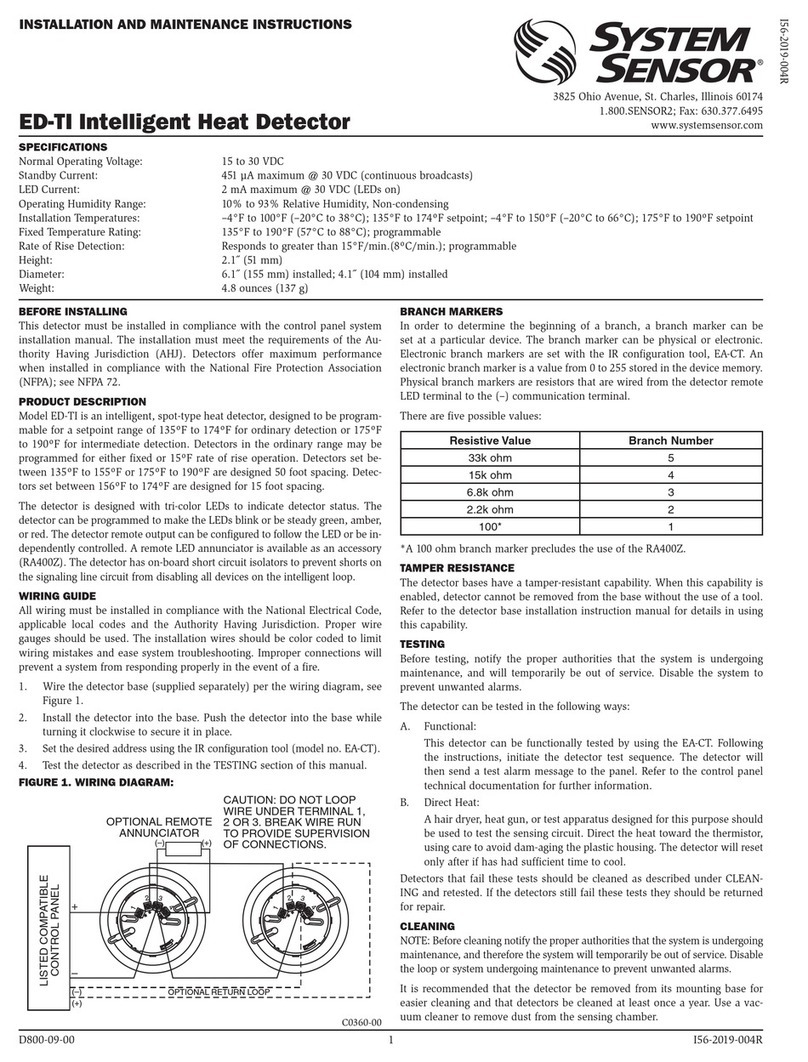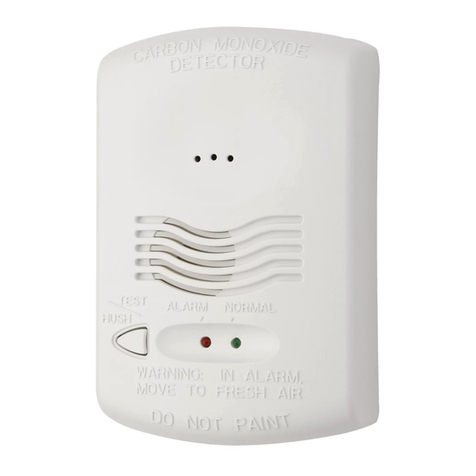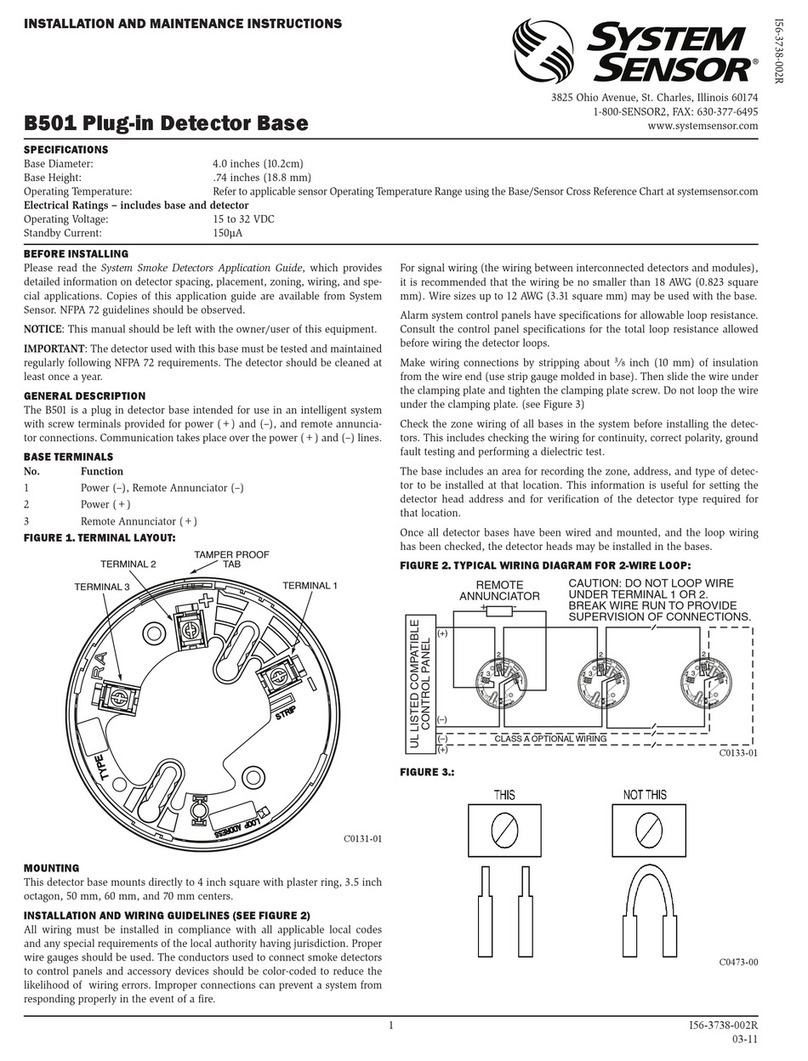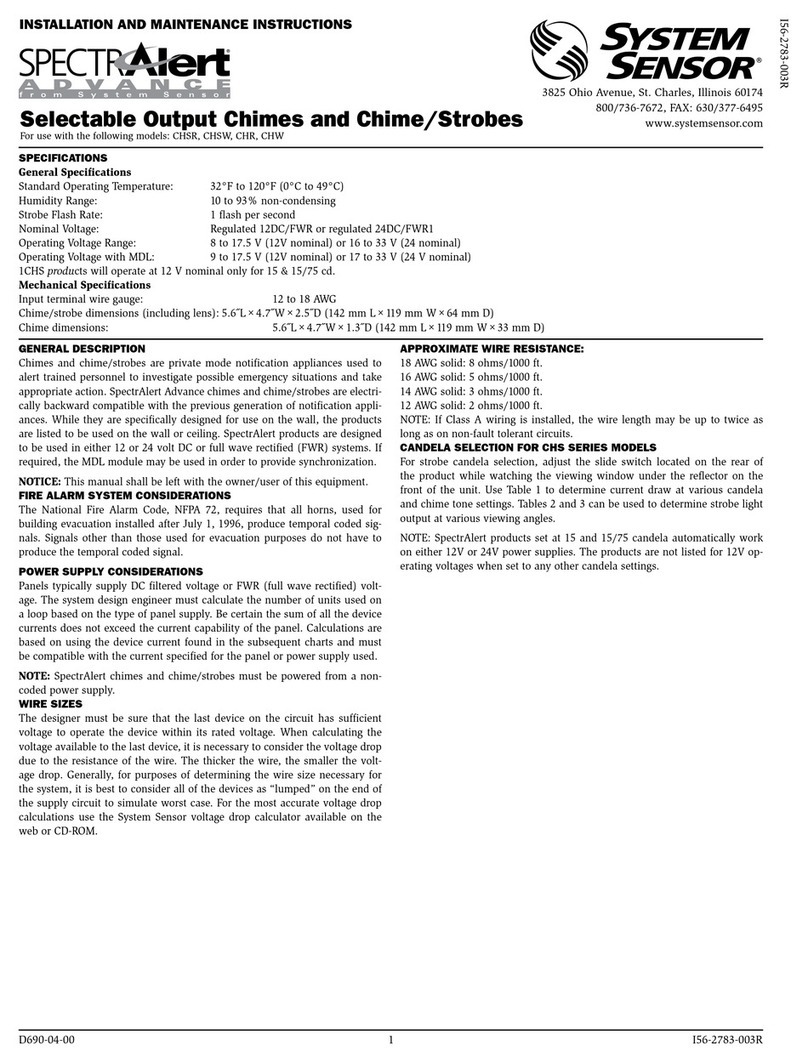
D770-53-00 1 I56-2617-001R
WFDE Vane-type Waterflow Detector
INSTALLATION AND MAINTENANCE INSTRUCTIONS
3825 Ohio Avenue, St. Charles, Illinois 60174
1-800-SENSOR2, FAX: 630-377-6495
www.systemsensor.com
Important
Please Read Carefully And Save
This instruction manual contains important information about the instal-
lation and operation of waterflow detectors. Purchasers who install wa-
terflow detectors for use by others must leave this manual or a copy of it
with the user.
Read all instructions carefully before beginning. Follow only those instruc-
tions that apply to the model you are installing.
Use vane-type waterflow detectors in wet-pipe systems only. DO NOT USE
IN DRY-PIPE, DELUGE, OR PRE-ACTION SYSTEMS. The sudden inrush of
water in such systems may break the vane or damage the mechanism.
Do not use in potentially explosive atmospheres. Do not leave unused
wires exposed.
Principles of Operation
Vane type waterflow detectors mount to water-filled pipes in sprinkler sys-
tems. Waterflow in the pipe deflects a vane. Deflection of the vane pro-
duces a switched output, usually after a specified delay. All WFDEs have
a pneumatically controlled mechanical delay mechanism. Delays are non-
cumulative; they reset if the flow of water stops or drops below minimum
triggering flow rate before the entire delay has elapsed. All detectors will
activate on a sustained flow of water greater than the maximum specified
in Table 1, but will not activate if the flow rate is less than the minimum
specified in Table 1.
Steel Pipe Compatibility
DO NOT USE THE ABOVE MODELS ON COPPER PIPE. The clamping
forces of the mounting bolts may collapse the pipe sufficiently to prevent
the detector from functioning properly.
DO NOT INSTALL STEEL OR IRON PIPE SECTIONS IN COPPER PIPING
FOR MOUNTING A WATERFLOW DETECTOR. Incompatibility between the
dissimilar metals will cause bimetallic corrosion.
Specifications
Contact Ratings: 10 A @ 125/250 VAC
2.5 A @ 24 VDC EC–certificate Number: 0786-CPD-40151
Triggering Flow Rate: Refer to Table 1 EN12259–5
Static Pressure Rating (maximum): 17.25 bar (250 psi) (1725 KPa)
16 bar (VdS)
Operating Temperature Ranges: 0° – 68°C (32° – 155°F)
Compatible Pipe: Steel Water Pipe (Refer to Table 1)
Shipping Weight: 1.8 – 3.2 Kilograms
Enclosure Rating: Nema4/IP54
Installation Guidelines
Before installing any waterflow alarm device, be thoroughly familiar
with national codes of practice and the requirements of the authority
having jurisdiction.
Failure to follow these directions may result in failure of the device to
report a waterflow condition. System Sensor is not responsible for de-
vices that have been improperly installed, tested or maintained.
1. Mount the detector where there is adequate clearance for installation
and removal and a clear view of it for inspections. See Figure 1 for
mounting dimensions.
2. Locate the unit 1.8 – 2.1 meters above the floor to protect from damage.
3. On horizontal runs, position the detector on top or on the side of the
pipe. Do not mount it upside down because condensation may collect
in the housing and impair the operation of the detector. For vertical
flow applications, mount detector on pipe where upflow conditions
exist. Failure to do so may prevent unit from operating properly.
4. Mount detector at least 15 cm from a fitting which changes the direc-
tion of the water flow, or no closer than 61 cm from a valve or drain.
5. BE SURE DIRECTION-OF-FLOW ARROW MATCHES ACTUAL DI-
RECTION OF FLOW IN THE PIPE.
Mounting Instructions
1. Drain the pipe.
2. Cut a hole in the desired location. Center the hole in the pipe as shown
in Figure 2, and be sure the hole is perpendicular to the center of the
pipe. If the hole is off center, the vane will bind against the inside wall
of the pipe. Use a drill or holesaw to cut a hole of the proper diameter.
See Table 2 for hole size. Before drilling, use a punch or scribe to mark
the drill site to keep the bit from slipping.
This System Sensor installation manual covers the following waterflow
detectors for sprinkler/fire alarm applications.
Table 1.
MODEL
NUMBER
DN
REF. PIPE
SIZE - mm (in)
NOMINAL
PIPE O.D.
(mm)
WALL
THICKNESS
(mm)
TRIGGERING
FLOW RATE
(liters/min)
WFD20E 50 (2) 60.3 2.3/2.9
30 – 57
WFD25E 65 (2-1/2) 76.1 2.6/2.9
WFD30-2E 80 (3) 88.9 2.9/3.2
WFD40E 100 (4) 114.3 3.2/3.6
WFD60E 150 (6) 168.3 4.0/4.5
WFD80E 200 (8) 219.1 4.5/5.9
